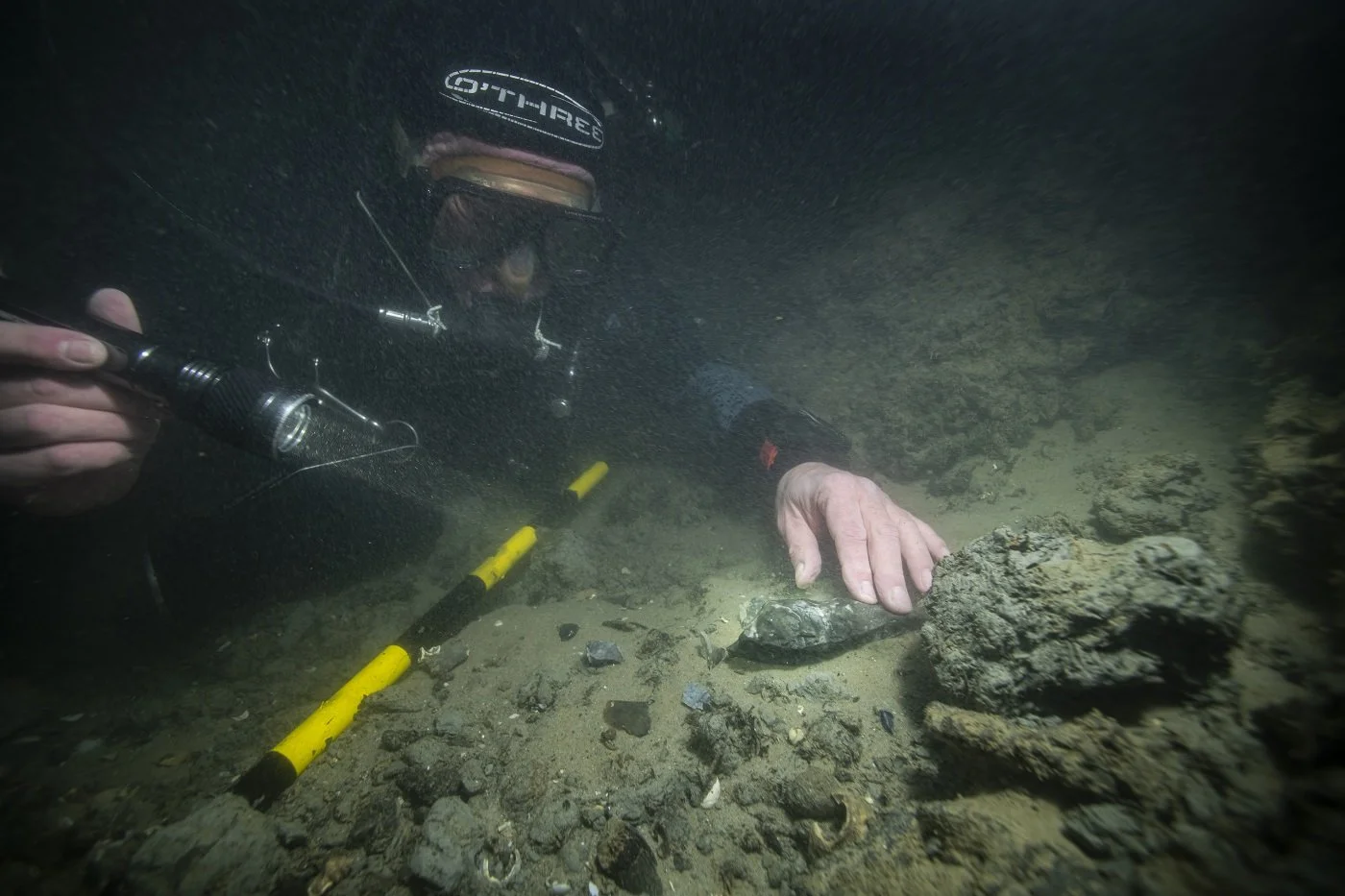Archaeologists from the University of Warwick are conducting an underwater study to document the submerged Mesolithic site of Bouldnor Cliff before it vanishes due to erosion.
Bouldnor Cliff is situated in the Solent between the Isle of Wight and the southern coast of England. The site was first discovered in 1999 when divers observed a lobster discarding worked flint tools from its burrow on the seabed.
At a time when Britain was cut off from mainland Europe by rising sea levels, the area of the Solent was a river valley inhabited by an advanced Mesolithic community who developed a boat building technology 2,000 years ahead of their time.
The study aims to find new data on the nature of the late Ice Age environment during the development of the Mesolithic era, and the extent of the interaction between the inhabitants of Bouldnor Cliff and Europe, including the exchange of materials.
Professor Robin Allaby, who is leading the expedition, said: “This is an incredible opportunity to understand the lost world in which the Mesolithic developed using the latest techniques before our chance is gone.”
The study will involve a comprehensive palaeoenvironmental analysis, in addition to state-of-the-art techniques such as optical simulated luminescence for constructing ecological profiles. Furthermore, archaeologists intend to recover archaeological artefacts and environmental markers to reconstruct the past environment.
Dr Kinnaird adds: “This is an exciting research project to showcase the new innovations in luminescence dating, which can tell when an object was last exposed to the Sun. The relevance of this technique in writing the narratives for 4000 years of history, at the time that the British coastline was rapidly changing, is huge!”
According to the researchers, these discoveries carry the potential to significantly transform our comprehension of the era when Britain emerged as an island.
Header Image Credit : University of Warwick
Sources : University of Warwick





